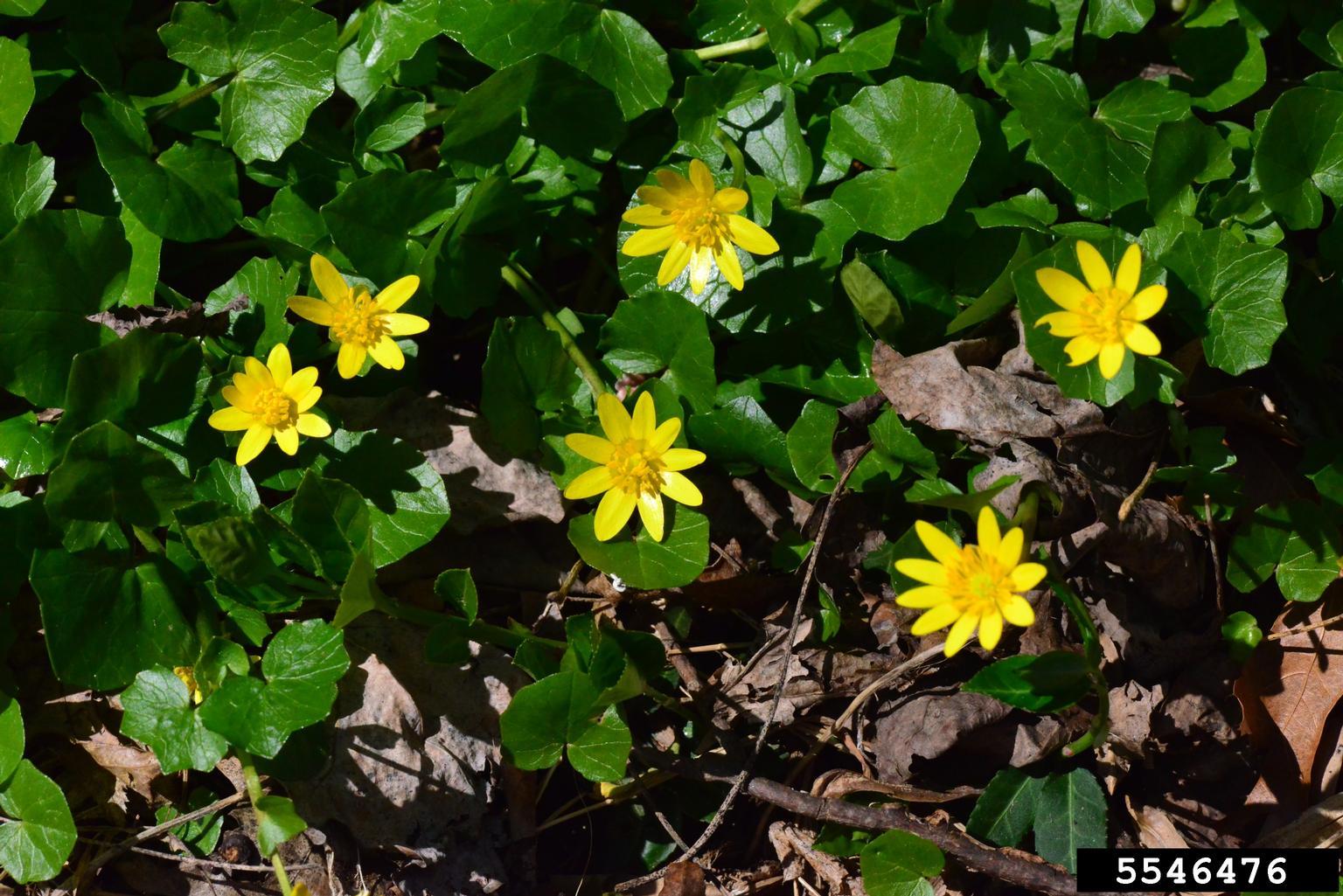About lesser celandine (Ficaria verna)
Life cycle
Lesser celandine, also called fig buttercup, is an herbaceous invasive perennial plant found most often in moist, wooded floodplains. This spring ephemeral arises early in the season, often near forest fringe areas, and creates a dense carpet of vegetation that prevents native ephemeral plants such as bloodroot, wild ginger, and others from surviving. This plant may be misidentified as marsh marigold, Caltha palustris, which does not produce the tuber found on lesser celandine.
Growth habit
These plants are 3- to 9-in high and have shiny, dark green, kidney-shaped leaves; flowers with glossy, bright yellow petals in early spring; the entire plant goes dormant in the summer.
Reproduction
Spreads by bulblets, tuberous roots, and seeds.

Tuberous roots of lesser celandine. Photo: C. Carignan
Control
Control of lesser celandine is difficult. Digging out plants can be successful with small patches, but it will take careful removal of all the bulblets and removal of all plant material to either a landfill or other means of destruction.
Chemical control can be achieved using a glyphosate (a non-selective herbicide) product early in the season. Aqua-neat or Aqua-star are glyphosate formulated products labeled for wetland areas. Begin in mid-February to early April as long as the temperature is 50 degrees Fahrenheit and no rain is anticipated within 12 hours. Waiting beyond this period of time may cause damage to many native wildflowers that share some sites. In this area, it is recommended to wait until half the plants are in bloom to start control.
Chemical control in turf areas or lawns
Products containing at least two of the following active ingredients (look on the product label) have been found effective; MCPA, triclopyr, or dicamba. They are labeled to manage many broadleaf weeds found in lawns. However, use caution with these products near ornamentals as the potential for volatilization (movement of pesticide vapors through the air) does exist in warmer temperatures. These products should not be used near delicate, valuable plants or vegetable gardens. For additional information about application rates and use follow the label directions.
Information provided by Chuck Schuster (Retired), University of Maryland Extension
